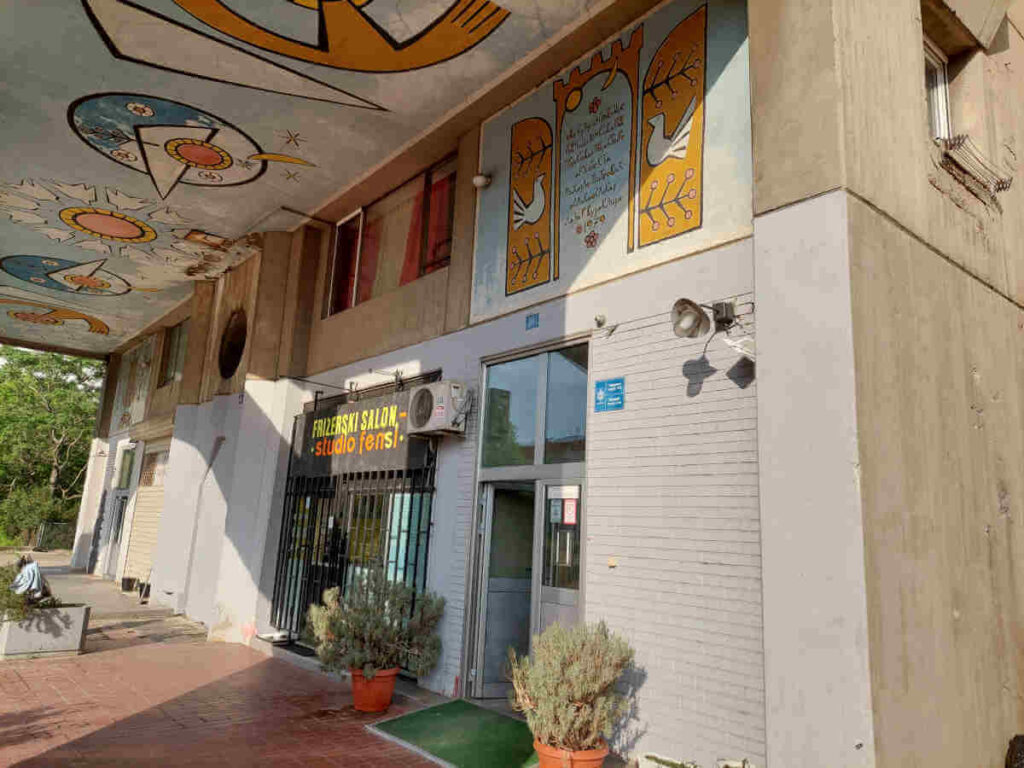The Genex Tower, also known as the Western City Gate, is a prominent symbol of Belgrade’s urban landscape. This brutalist-style skyscraper is not only a defining element of the city’s skyline but also a towering landmark that welcomes citizens and tourists arriving from Nikola Tesla Airport as they journey towards the city center.
Table of Contents

Genex Tower Specs & Design
Designed by architect Mihajlo Mitrovic and constructed in the late 1970s, the Genex Tower stands at a height of 115 meters, with its antenna extending it to 135 meters. Featuring 35 floors, this multifunctional complex was envisioned to include residential and office spaces, along with a restaurant and observation deck at the top.
The Genex Tower remained the tallest building in Serbia and Belgrade for 42 years, until being surpassed by the West 65 Tower in 2021. It was also the tallest building in the Balkans for 14 years, until being surpassed by the Akbank Tower in Istanbul, Turkey, in 1993. Currently, it is the fourth tallest building in Serbia, with Belgrade Tower at Belgrade Waterfront being the tallest.

One of the most striking features of the Genex Tower is its unique architectural design. The building consists of two interconnected towers, one of which is a residential tower, while the other is a smaller, office tower. The two towers are connected by a two-story bridge that spans across the top floors, giving the building its characteristic appearance.
A circular restaurant-observation deck at the top (the first of its kind in Europe) is an eccentric element that unfortunately was never operational. It would have offered an impressive panoramic view of the city.

Location
Located in Block 33, adjacent to the E-75 highway, the Genex Tower stands in the municipality of Novi Beograd, specifically at 41-43 Narodnih heroja Street.
History and Significance
Considered avant-garde at the time, the Genex Tower stood as a symbol of Belgrade’s development, serving as the headquarters of the highly successful Yugoslav company, Generaleksport. It was a hub for the era’s business and political elite. Upon its construction, the tower ranked among the top 100 most successful foreign trade structures globally. Renowned as the first smart building in the Balkans, it featured a pioneering computer center that controlled functions such as cooling, heating, electronics, and elevator operations.
In the 1970s, Yugoslav architecture and construction companies developed to such an extent that they became a powerful tool of foreign policy. Buildings were erected as symbols of progress and power of the country that chose its own, third way. Architect Ljubica Slavković explained that with the Genex Tower, Yugoslavia wanted to demonstrate to the world its strength, progress, and the idea that “self-managed workers can build anything that can be built in the West.”
The company and the building, however, shared the fate of Yugoslavia, following its rise and fall. Since 2015, Generaleksport has been in bankruptcy, and the building and plaza in front of it have not been renovated since their construction. The tower once occupied by the Genex company now sits empty, while the residential tower is still home to a lot of people.

The Genex Tower now attracts tourists as a masterpiece of brutalist architecture, considered one of the best examples of its style built in the 1960s and the 1970s worldwide. For citizens of Belgrade, it serves as a reminder of the power of their former country, Yugoslavia. Moreover, it symbolizes a “welcome home” building that warmly greets citizens of Belgrade upon their return from travels if they are arriving from the Nikola Tesla Airport, from that side of the city.
The brutalist-style building was featured on the cover of the exhibition catalog “Toward a Concrete Utopia: Architecture in Yugoslavia, 1948–1980,” held from July 2018 to January 2019 at the Museum of Modern Art (MoMA) in New York City.

Due to its significant cultural, historical, and architectural importance, the Genex Tower was declared a cultural monument in November 2021.
Murals
Another interesting fact about the Western City Gate is that its appearance is still adorned with murals by the famous artist Lazar Vujaklija, which have been preserved over all these years. Even before its occupancy, the concrete facade was embellished with a mural by Vujaklija, commissioned in 1979.
Genex Tower in Popular Culture
The Genex Tower is mentioned in the song of the Serbian singer known as Konstrakta, who represented Serbia at the 2022 Eurovision Song Contest. She mentions the skyscraper in her song “Noble,” which is part of the music trilogy “Triptych.”
“From my balcony, I can see the Genex Tower. When I look at it, I’m afraid I’ll fall from it, I’ll fall from it,” she says in the song (at 3:15 min), delving into the themes of ageing, the decline of the socialist bourgeois class, the rise of the new bourgeoisie, and the political system. “Genex makes me think of Yugoslavia… socialist, federative,” says Konstrakta in her thought-provoking masterpiece as she refers to the Socialist Federal Republic of Yugoslavia (SFRY, 1963–1992).

Conclusion
The Genex Tower stands as a testament to Belgrade’s architectural heritage and Yugoslavia’s ambitious vision. As a prime example of brutalist architecture, it has captured the hearts of Belgrade’s citizens and tourists alike. From its innovative design and multifunctional use to its iconic status in popular culture and art, the Genex Tower remains a symbol of the city’s past and present. Despite facing challenges such as bankruptcy and lack of renovation, its cultural and historical significance continues to shine through, making it a cherished landmark.


Leave a Reply